Planting onions offers great satisfaction in the vegetable garden: these easy-going vegetables grow quickly, require little maintenance, and store well for a long time. To succeed in their cultivation, it is essential to respect the right timing, choose a suitable soil, and plant with care. Here are all our practical tips for a successful onion planting.
When to plant onions?
Onion planting mainly takes place in spring, between late February (for mild climates) and early April (for regions north of the Loire).
Ideally, wait until the risk of severe frosts has passed and the soil temperatures are suitable for working.
The majority of yellow, red, and white onions are planted during the same period. White onions, which are earlier, can be planted at the very beginning of the season.
Did you know?
In regions with mild winters, onions can also be planted in autumn (September), by choosing cold-resistant varieties, such as 'White Globle' onions, for a spring harvest (May-June).
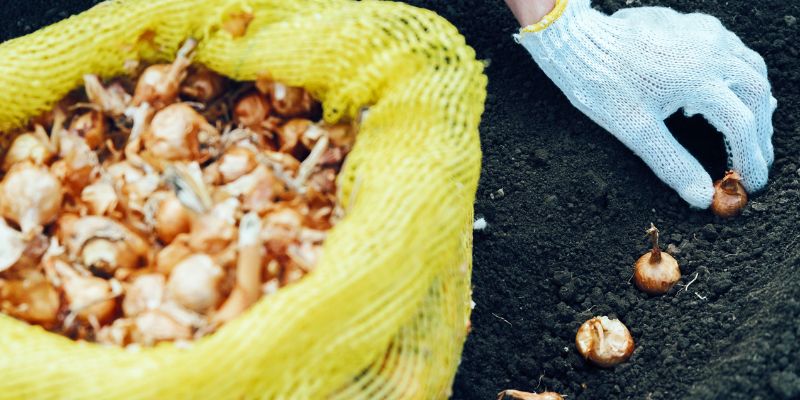
Where to plant onions for optimal growth?
- Choose a sunny spot:
Onions need light and warmth, and protection from winds, to develop properly.
- Prefer a light and well-drained soil:
Onions thrive in light, well-drained and rather poor soils. Conversely, they dislike moisture and rich, heavy, or clayey soils.
If your soil is heavy or clayey, feel free to lighten it with some gravel, pumice, or coarse sand, or simply plant on raised beds to improve drainage.
- Do not plant after other alliums:
Do not grow onions where you have previously planted garlic, onions, leeks, or shallots in the past years. Respecting a rotation of 3 to 4 years helps limit diseases.
Which onion varieties to choose?
To start, prefer onion bulbils, which are easier to succeed with than direct sowing. Then, for the choice of variety, it depends on your tastes and usage:
- Yellow onions are perfect for winter storage. In terms of flavour, they are the king of cooked onions, fried or caramelised.
- White onions are milder and earlier, but do not store as well. They can be enjoyed both raw and cooked.
- Red onions are appealing for their sweet and less pungent flavour. They are perfect raw in salads.
→ Find all our onion varieties ready to be planted.
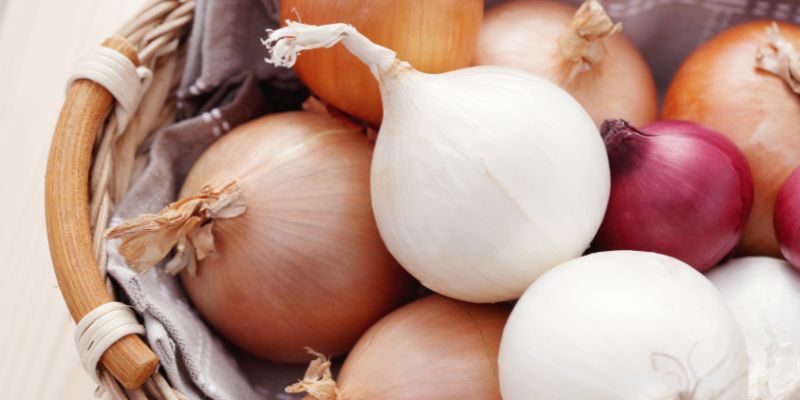
How to plant onions?
1- Prepare the soil:
Weed and refine the soil to about ten centimetres. It should be well-crumbled, free of stones and clumps, and especially well-drained. No fresh manure or nitrogen-rich fertilisers, as onions do not like overly rich soils. Mark out small furrows.
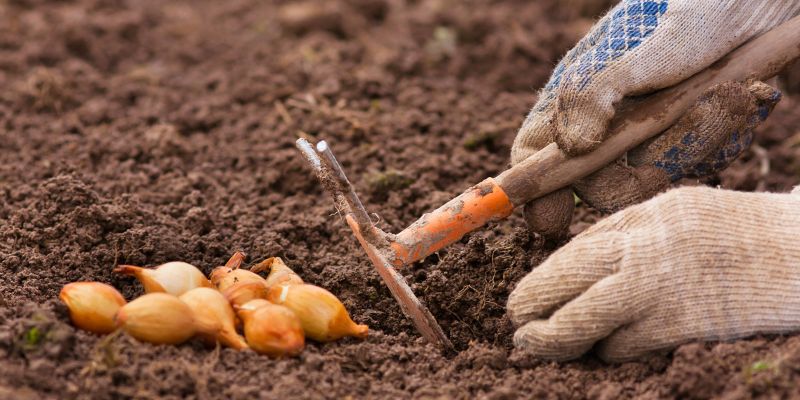
2- Identify the orientation of the bulbils:
Each small onion to be planted has two ends:
– the flat base (where the roots grow) goes down,
– the tip (sometimes a bit green) goes up.
This is essential for the onion to develop properly.
3- Plant the bulbils:
Push them in to a maximum depth of 2 or 3 cm, without burying them completely. The tip can slightly protrude from the soil.
4- Respect the spacing:
Leave 10 to 15 cm between each bulbil, and 25 to 30 cm between the rows. This avoids competition between the plants.
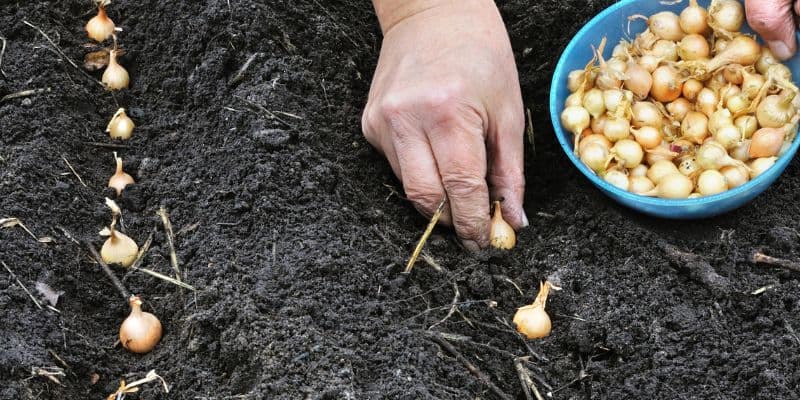
5- Firm and water if necessary:
Lightly cover with fine soil, gently firm with your hand, then water lightly if the soil is dry.
Caring for onions until harvest
Once the onion planting is done, their cultivation requires little maintenance, but a few simple actions can help achieve well-formed and healthy bulbs.
- Water very moderately
Onions dislike moisture. Generally, no watering is necessary, except during prolonged dry spells. Excess water can cause diseases or slow down ripening.
- Hoe and weed regularly
Onions do not like competition from weeds. Use a hoe every two weeks to aerate the soil and limit unwanted herbs.
- Avoid nitrogen-rich fertiliser
Excess nitrogen promotes foliage at the expense of bulbs. If necessary, a bit of wood ash or a potassium-rich fertiliser is sufficient, but it is not essential.
- Monitor for diseases and pests
The onion fly, downy mildew, or white rot may appear. As a preventive measure: space the plants well, avoid moisture, and respect crop rotation. To learn more, read our article "Onion diseases and pests".
- Once the foliage has yellowed and fallen over, it will be time to harvest. For more information, check our article: "Harvesting and storing garlic, onions, and shallots".
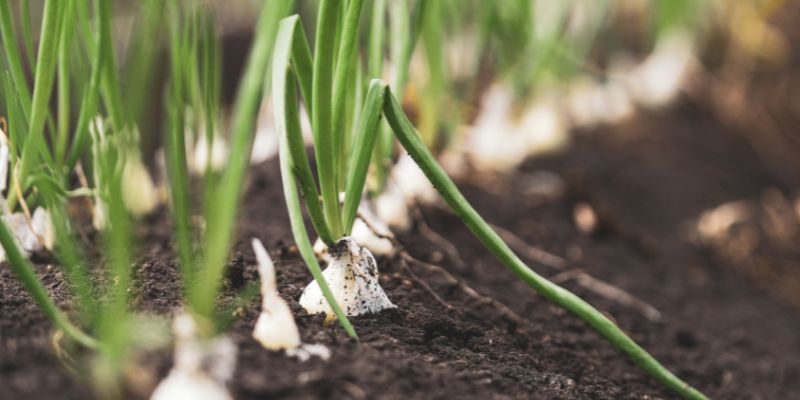
FAQ – Your questions about onion planting
- Can you plant sprouted onions?
Yes, as long as the bulb is still firm and healthy. Sprouted onions will mainly produce foliage or small bulbs, rarely enough to be stored for long. Plant them separately, without relying on them for a proper harvest.
- Should onions be hilled like potatoes?
No, absolutely not. Onions should not be hilled, as excess soil around the bulb encourages moisture and diseases. It is even preferable for the top of the bulb to remain partially visible.
- Can onions be grown in pots or containers?
Yes, provided you use a deep container (at least 20 cm), filled with well-drained substrate. The exposure should be full sun. Prefer early varieties or small onions.
- Should broken onion leaves be straightened?
No, it is unnecessary to straighten them. Once naturally laid down, this indicates that the bulb has finished growing. However, if they break suddenly by accident, it is not serious, but it may slow development.
- Can onion flowers be used?
Onion flowers are edible, but generally, it is best to avoid letting them flower, as this hinders bulb formation. Cut them off as soon as they appear if you wish to encourage the harvest.































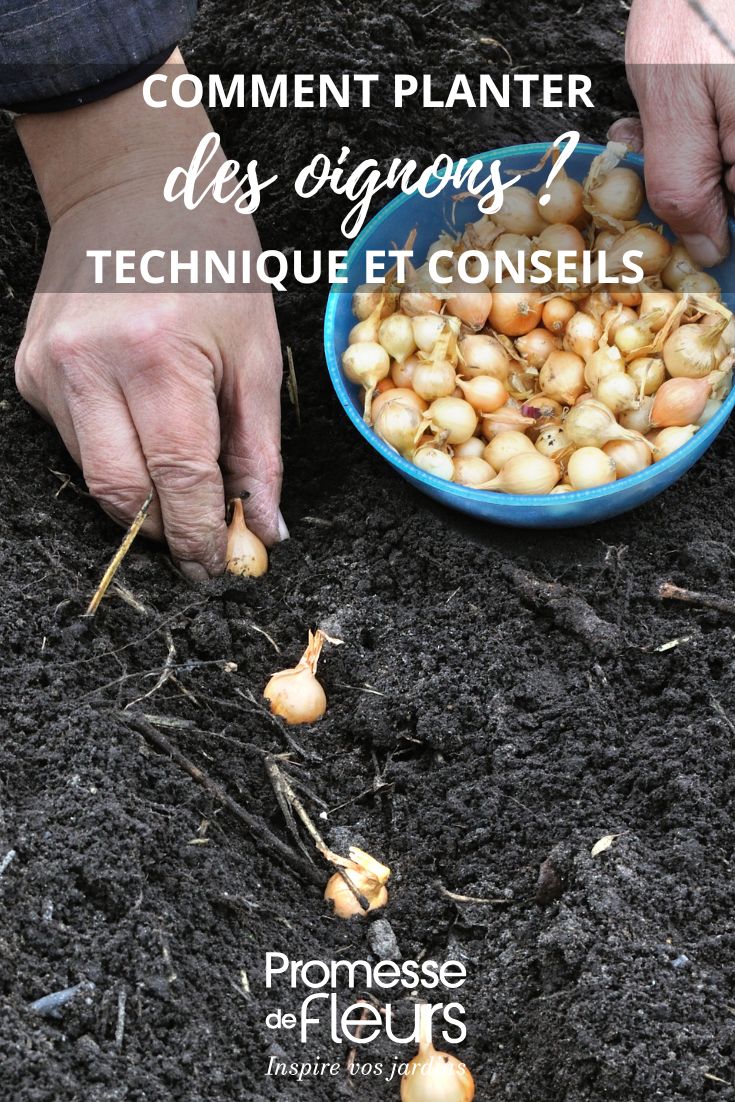
Comments